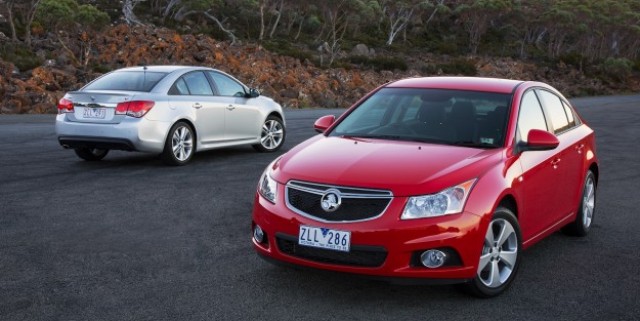
The 2013 Holden Cruze has launched with significantly lower pricing, more standard equipment, and re-calibrated suspension and automatic transmissions. As revealed exclusively by CarAdvice last week, a 1.6-litre turbocharged four-cylinder engine also makes its debut in the ‘MY14’ Holden Cruze sedan and hatch range.
Priced from $19,490, the entry-level model is now the Holden Cruze Equipe, which becomes a permanent fixture in the line-up. Despite a $2000 reduction in price compared with the superseded CD model, the Equipe (below) adds 17-inch alloy wheels, fog lights, rear parking sensors and a seven-inch touchscreen with MyLink infotainment system as standard.
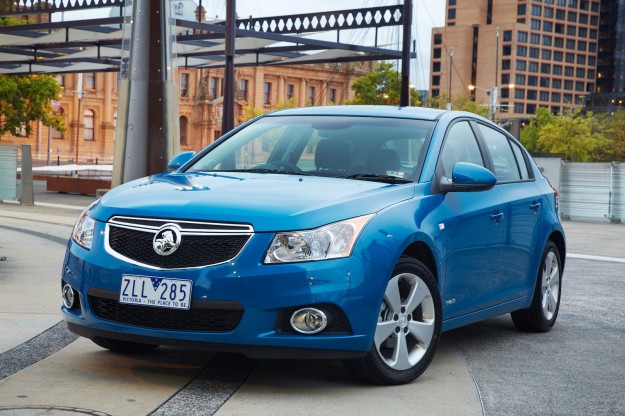
The Equipe retains the 1.8-litre non-turbo four-cylinder engine from the previous CD, but a new Generation II six-speed automatic transmission debuts as a $2200 option. Two other drivetrain options are available in the Equipe – a 1.4-litre turbo automatic for $23,190, and a 2.0-litre turbo-diesel automatic for $25,690. A manual transmission is no longer available with the diesel engine.
The Cruze CDX continues in the range, but is now available as a sedan only. Compared with the previous CDX, it adds a reverse camera and keyless start, and is priced from $24,190 for the 1.8-litre auto and $28,190 for the 2.0-litre diesel auto.
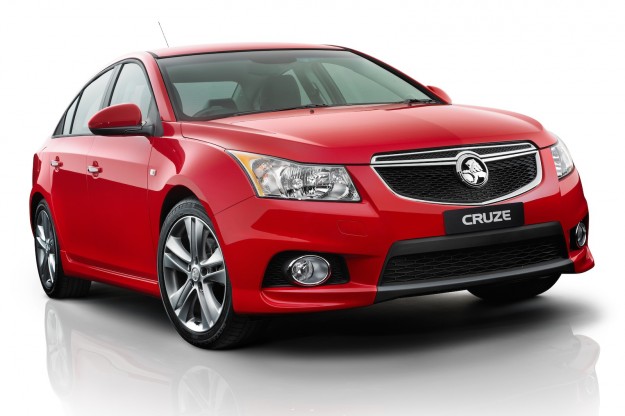
Both Cruze SRi and SRi-V (above) models score a new 1.6-litre turbocharged four-cylinder engine with 132kW of power and 230Nm of torque. Despite the 0.2-litre-larger engine compared with the previous Cruze SRi, pricing drops by $3500 on this model. At $22,490 for the six-speed manual, the Cruze SRi offers the most power and torque of any comparably priced petrol-engined rival. It is also one of the quickest, with Holden claiming 0-100km/h in 8.4 seconds.
In addition to the leather-bolstered seats, chrome exhaust tip and sports suspension added to the SRi, the $26,490 SRi-V gets 18-inch alloy wheels, electronic climate control, full leather trim and a reversing camera. Satellite navigation is no longer standard, however, but will be added to the equipment list when it is integrated into the MyLink system (below) later this year.

The Generation II six-speed automatic transmission adds $2200 to both the Cruze SRi and SRi-V 1.6-litre turbo models. Compared with the transmission on the Equipe and CDX 1.8-litre models, the SRi and SRi-V get a Sports mode with auto downchanging under brakes and Performance Mode Lift Foot (PMLF) which holds lower gears when harder driving is detected.
As the Cruze is a GM ‘world car’, Holden was limited to offering a new colour palette and slight external tweaks with the MY14 model. Under the skin, however, Holden claims there are major changes.
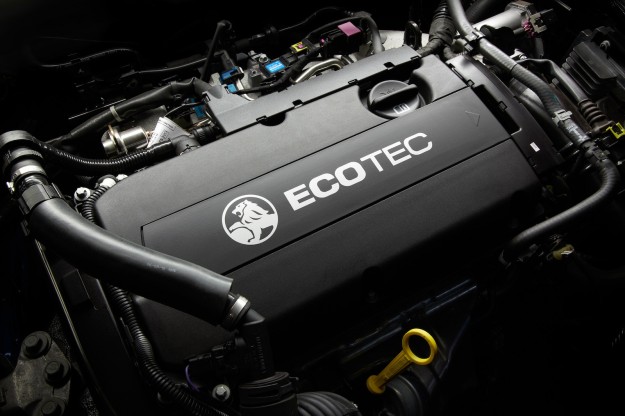
The re-calibrated automatic transmission in the petrol models was primarily designed to offset criticism that the previous auto did not hold gears on hills, particularly with the torque-lite 1.8-litre.
Suspension re-tuned by Australian engineers has resulted in a new ‘comfort’ setting for Equipe and CDX models, which now offers a slightly softer tune. The SRi and SRi-V models get a firmer ‘sports’ suspension tune, incorporating a stiffer rear twist beam (from the Opel Astra), shorter springs and firmer dampers. All models flick Kumho tyres for Bridgestone Turanza (Equipe and CDX) and Potenza (SRi and SRi-V) rubber – Holden engineers say the under-performing Korean tyres had long been on the agenda to be dropped.
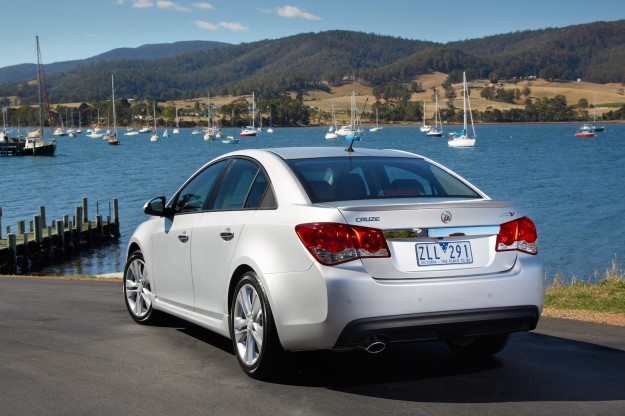
Holden believes that the Cruze needed to feel “more like a Holden” and that meant increasing its driver appeal. Engineers benchmarked the Mazda 3 for outright dynamics and aimed to make the Cruze SRi and SRi-V the most dynamic cars in their class.
Compared with close-relative the Opel Astra – which shares its Delta II platform and 1.4- and 1.6-litre turbo engines with Cruze – the Holden is claimed to be more agile, with a sportier automatic transmission.
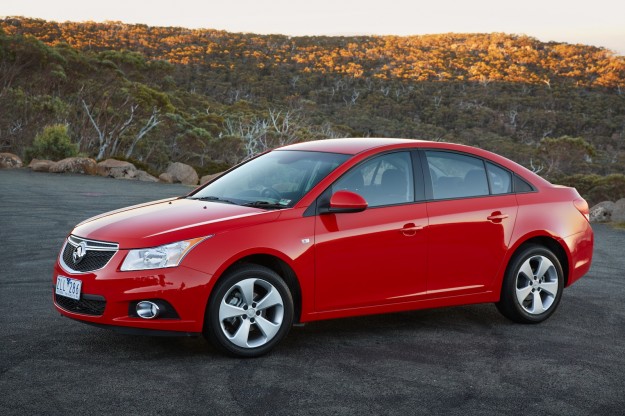
A “global re-tune” of the electro-mechanical power steering was conducted for Equipe petrol turbo, SRi and SRi-V models, while all 1.8-litre petrol and 2.0-litre turbo-diesel models continuing with hydraulic power steering. Only the turbo petrol models continue to get a Watts link rear suspension set-up.
Holden says the decision to continue the suspension and steering hardware divide between models purely came down to cost – the regular torsion bar and hydraulic steering are cheaper to produce for the entry 1.8litre models. The more expensive 2.0-litre turbo diesel benefits least from the upgrades, only adopting the ‘comfort’ suspension tune, while the Korean-built Cruze Sportwagon misses all the Australian engineering tweaks including the revised automatic transmission and suspension tune.
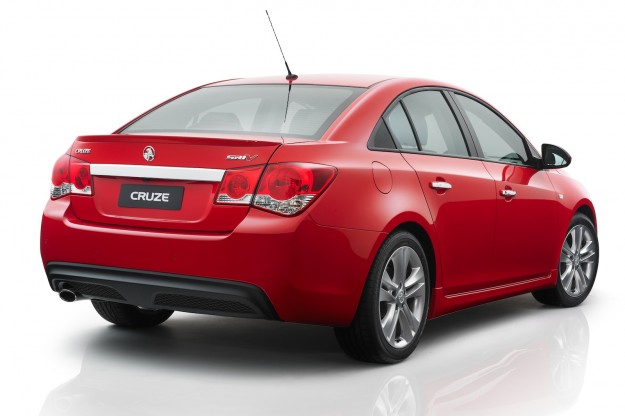
Holden has come out swinging with Cruze pricing to combat sales down 37 per cent for the first two months of this year. The entry-level Equipe is now $500 cheaper than its Nissan Pulsar and Toyota Corolla arch rivals, while the SRi offers the highest power and torque outputs of any comparably priced petrol-engined rival.





